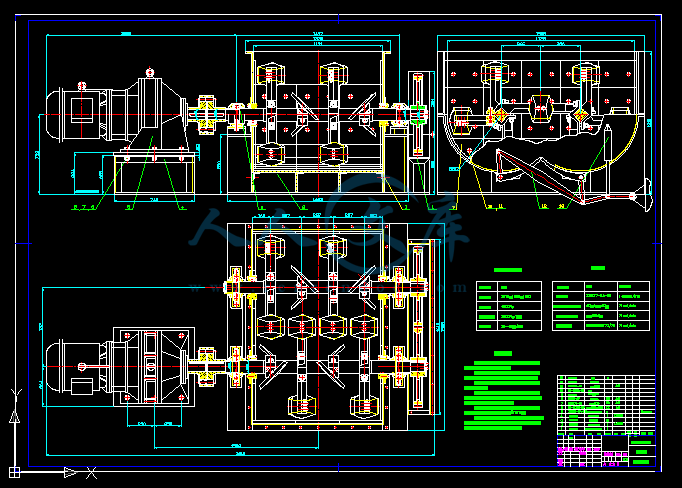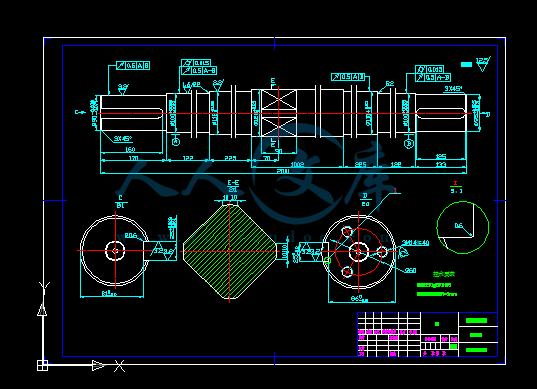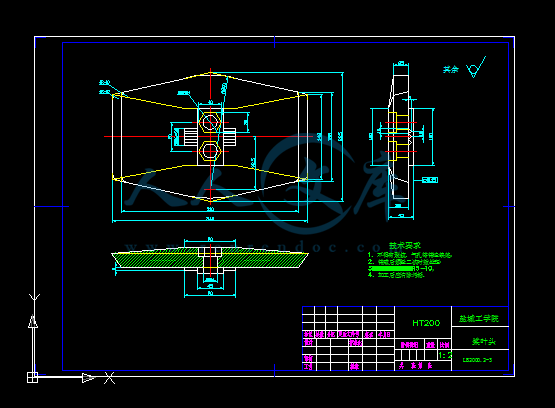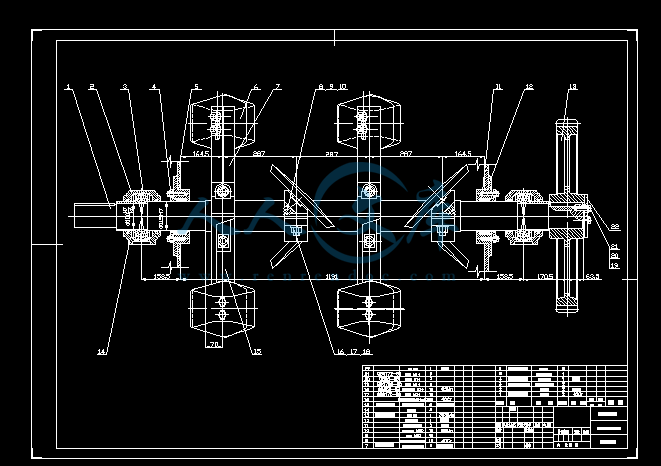32页 10000字数
LB2000沥青搅拌机设计











目 录
1 前言1
2 搅拌器设计数据3
2.1拌和桨叶对转轴安装角的选择3
2.2拌桨轴转速确定5
2.3叶桨式拌器参数确定7
2.4 搅拌器驱动功率计算13
2.5双轴式叶桨搅拌器的强度计算16
3 各零部件的参数计算21
3.1轴的参数计算21
3.2 齿轮参数计算22
3.3轴承的选取23
3.4桨叶的参数计算23
3.5桨背的参数计算23
3.6箱体的参数计算24
结论26
参考文献27
致谢28
附件清单29
摘要:为了提高产品的加工效率和质量,满足特定的加工要求,本课题设计研究了LB2000沥青搅拌机的总体构造,使得该沥青搅拌机在相同的要求下达到更好的使用效果,结构更加简便,使用更加方便。根据加工工艺要求进行设计,采用工序高度集中的原则,确定了搅拌机的整体布局方案,拟定了电机的传动路线,应用最优化方法布置零件、确定传动参数,设计了轴的结构,进行了齿轮、轴承等相关零件的强度校核计算。搅拌机采用微机程控和手动相结合的控制方法,大大提高了工作效率和安全,较好实现了设计要求。本沥青搅拌机具有优良的搅拌性能卓越的经济性能优秀的质量和稳定可靠的特性,模块化设计,运输安装快速:模块化和快速安装系统技术的采用,令运输与安装变的更加快捷。现在沥青搅拌机已经克服了无法加粉料和沥青老化的问题,同时由于具有生产设备简单,能力大;但是其仍然具有一些难于克服的缺点,主要有材料无法达到强制搅拌站的精确程度;精度误差比较大;对原料的含尘、水、超限料尺寸要求比较严格。关键词:沥青搅拌机;沥青混凝土搅拌设备;搅拌机;路面机械。
、论文内容及要求
⒈完成LB2000沥青搅拌机的总体设计
⒉完成搅拌器等主要零部件设计
⒊绘制部分零件和部装图
⒋设计说明书一份,说明字数不少于12000字
二、主要技术指标
1.根据使用需要,该沥青搅拌机性能的搅拌能力要达到2吨/批,生产效率达到
160吨/小时;
2.生产应是全自动进行的,生产速度为40秒/缸;
3.装配时以焊接为主,焊前应清除焊件表面铁锈,油污,水分等杂质,焊条必须要
烘干。为了防止空气侵入焊接区而引起气泡,裂纹,降低接头性能,应尽量采用短
弧焊;
4.热影响区应在高温停留时间不宜过长,以免晶粒粗大;
5.焊接角焊缝时,应对接多层焊的第一道焊缝和单层单面焊缝要避免深而窄的坡口
形式,以防止未焊透和夹渣的的缺陷;
6.多层焊时,应连续焊完最后一层焊缝,每层焊缝金属的厚度不大与5mm。
7.当焊件的刚性增大时,焊件的裂纹倾向也随之增大,故焊接刚性大的焊件宜采用
焊前预热和焊后消除应力的热处理措施。
三.毕业设计物化成果的具体内容及要求
1、图纸工作量
⒈总装图 1张
⒉搅拌中心 1张
⒊箱体 1张
⒋桨臂(左,右)旋 2张
⒌盘根密封器 1张
⒍连杆机构 1张
⒎双卧轴 1张
⒏齿轮 1张
⒐叶桨头 1张
⒉设计说明书要求
设计说明书1份,不少于12000字,且要符合规范要求。
⒊其他要求
绘制部分零件图、部件装配图两张、总装配图一张。主要参考文献:
1、张世英.筑路机械工程.北京:机械工业出版社,1998.
2、陈元机. 筑路机械设计技术.筑路机械与施工机械化,1991(4)-1992(1-5).
3、陈大先.机械设计手册(第1至5卷).北京:化学工业出版社,2002 .
4、陈秀宁. 机械设计课程设计.浙江:浙江大学出版社,1995 .
5、辛德刚等.高速公路沥青路面材料与结构,北京:人民交通出版社,2002 .
6、化工设备设计全书编委会.化工设备设计全书2搅拌设备与设计.上海:上海科学
技术出版社,1985 .
7、陈志平等.搅拌与混合设备设计选用手册. 北京:化学工业出版社,2004 .
8、王凯等.编搅拌设备. 北京:化学工业出版社,2003 .
9、冯忠绪.混凝土搅拌理论与设备.北京交通出版社,2001 .
10、搅拌设备3 . 北京:化学工业出版社,2003 .
 川公网安备: 51019002004831号
川公网安备: 51019002004831号